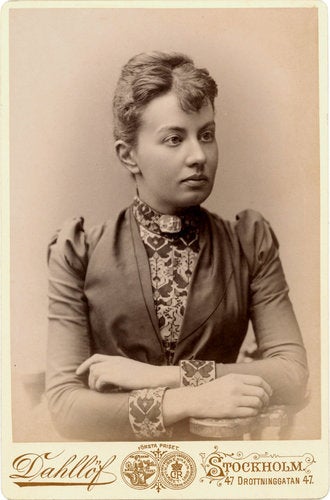
Imagine having to get a man’s permission just to go to school.
That was the situation that Sofya Kovalevskaya, a 19th century Russian woman, faced.
Kovalevskaya was the daughter of a well-educated military officer. When she was eleven, her parents used leftover papers from her father’s school days to wallpaper her bedroom, and she became intrigued by the calculus equations on her walls. She wanted to learn more.
At the time, however, unmarried women weren’t allowed to attend university in Russia, and they needed permission from their fathers or husbands to study abroad. So Kovalevskaya got married: to a young paleontology student and friend. Their relationship would remain platonic, and he would sign any papers she needed.
They moved to Germany, where she audited classes on physics and math at the University of Heidelberg. Though she wasn’t allowed to actually earn a degree, she was such an impressive mathematician that she got the attention of professor Karl Weierstrass at Göttingen University in Berlin. He started teaching her classes privately, and sponsored her in publishing three important math papers.
With his support, in 1874 she became the first woman to earn a modern PhD in mathematics. Ten years later, she took a job at Stockholm University in Sweden, and achieved another first: the first woman in Europe to be a professor of mathematics.